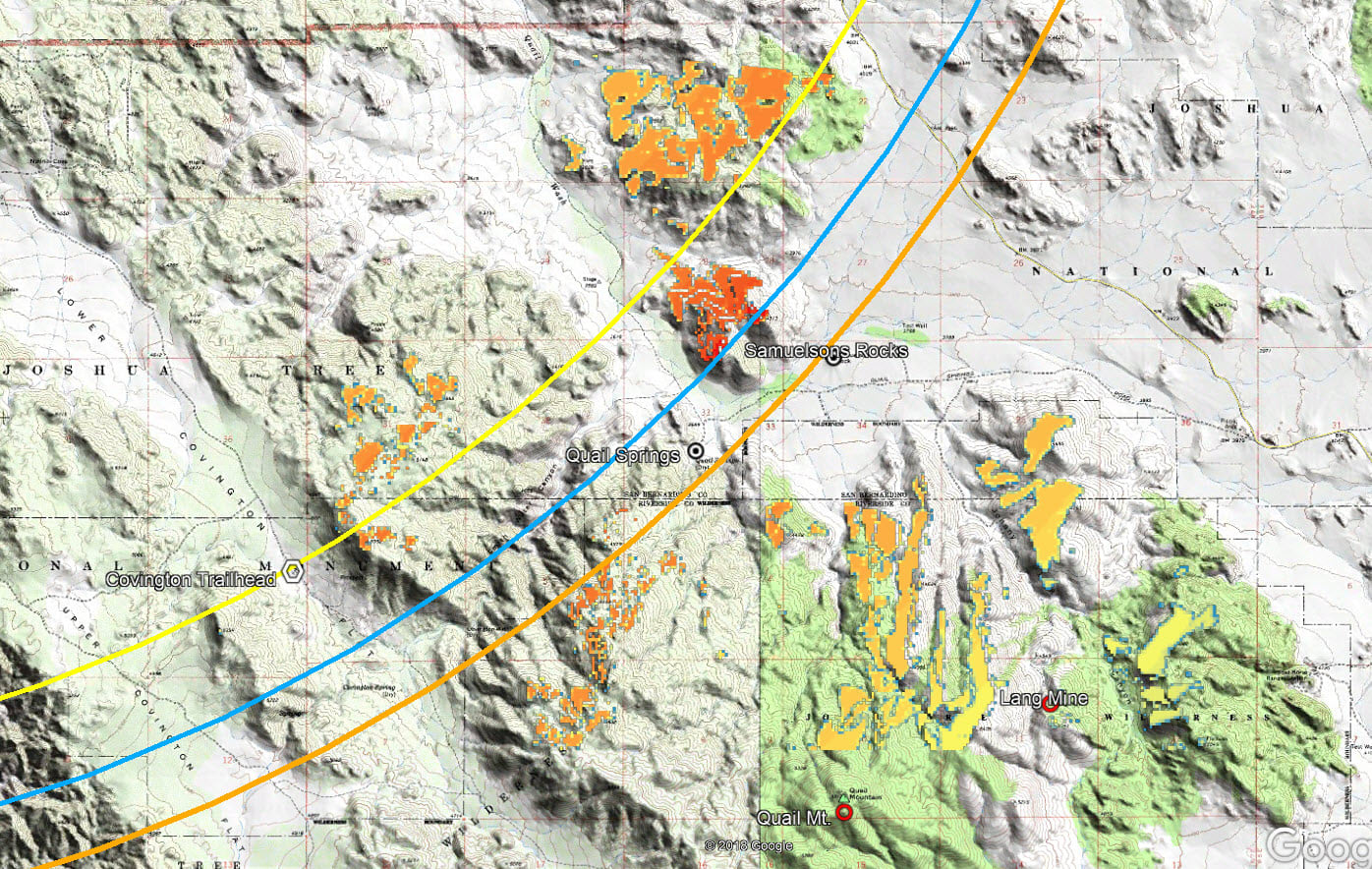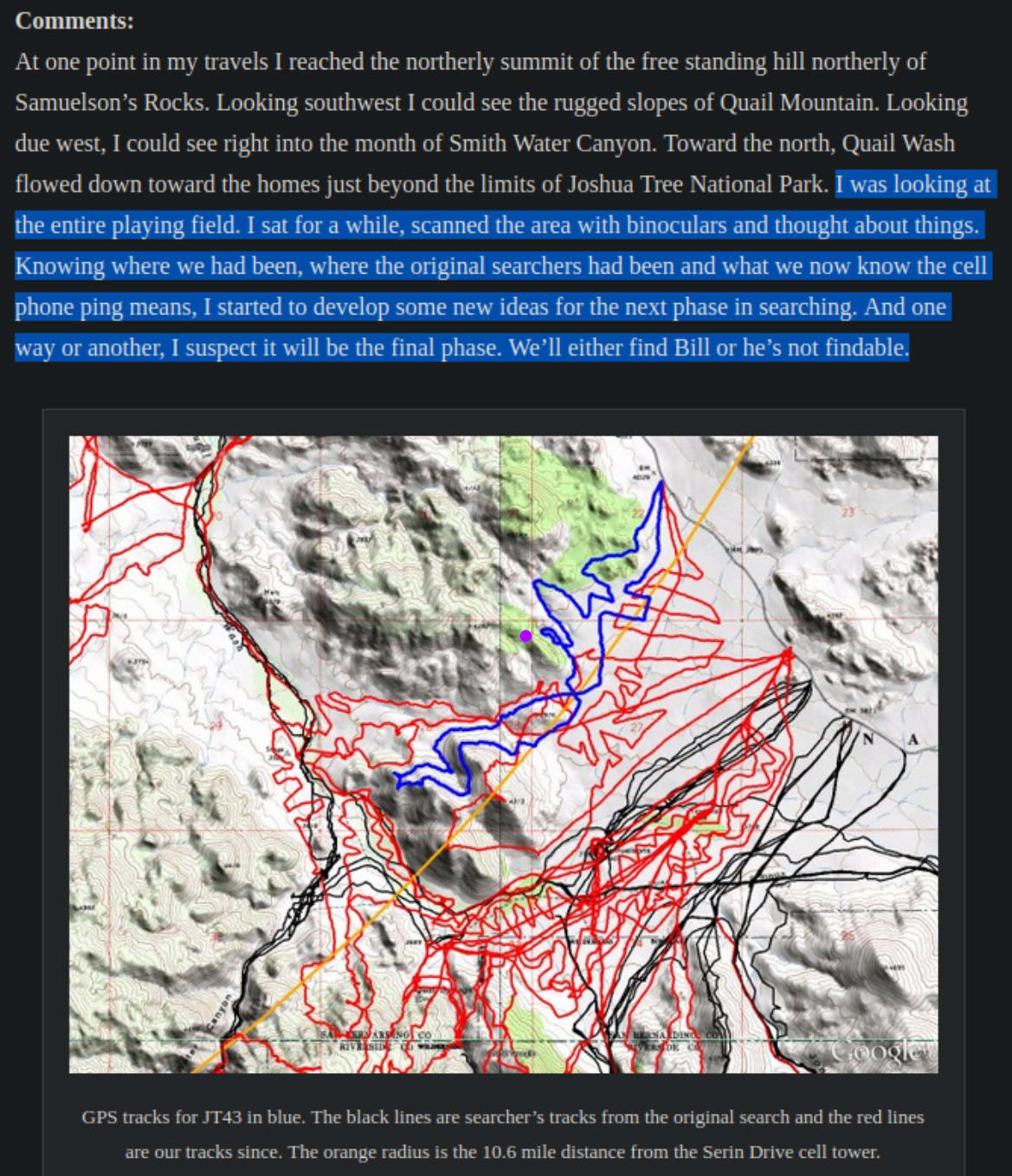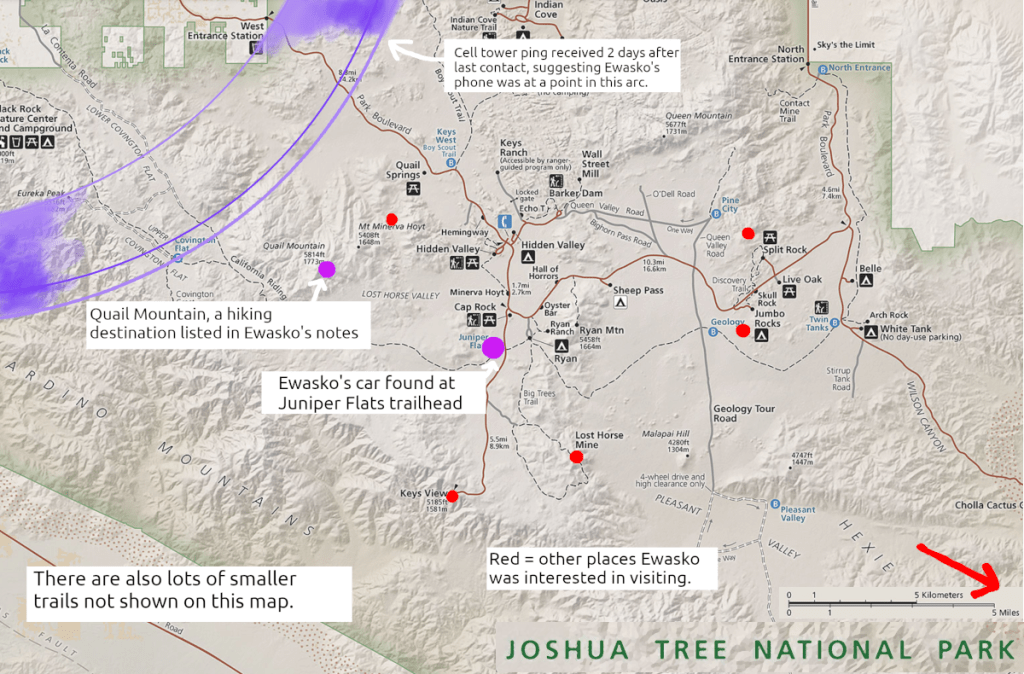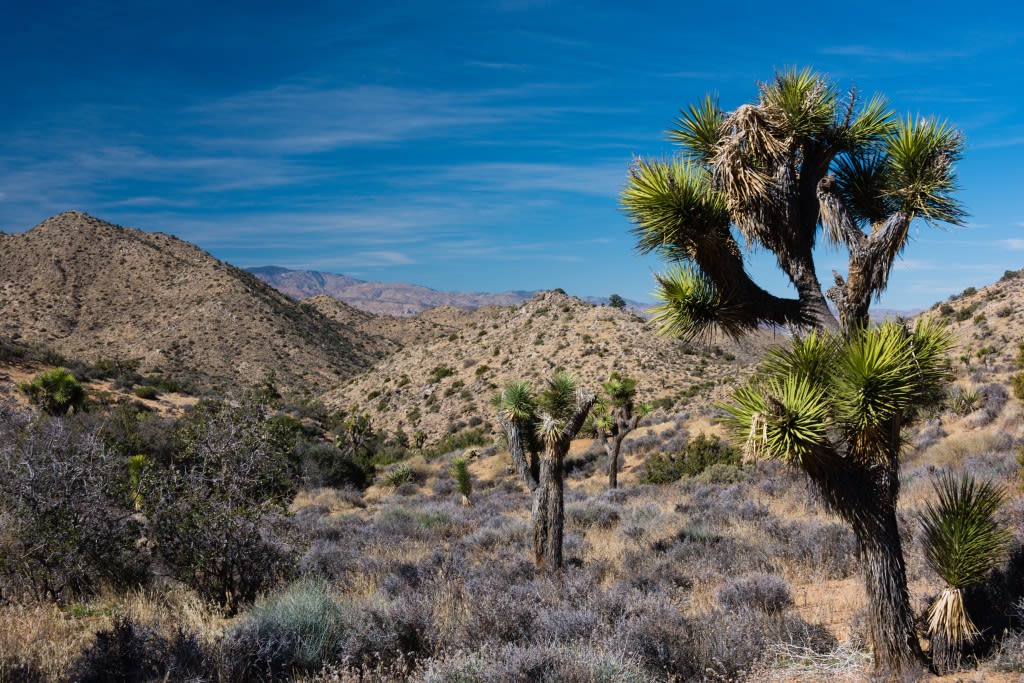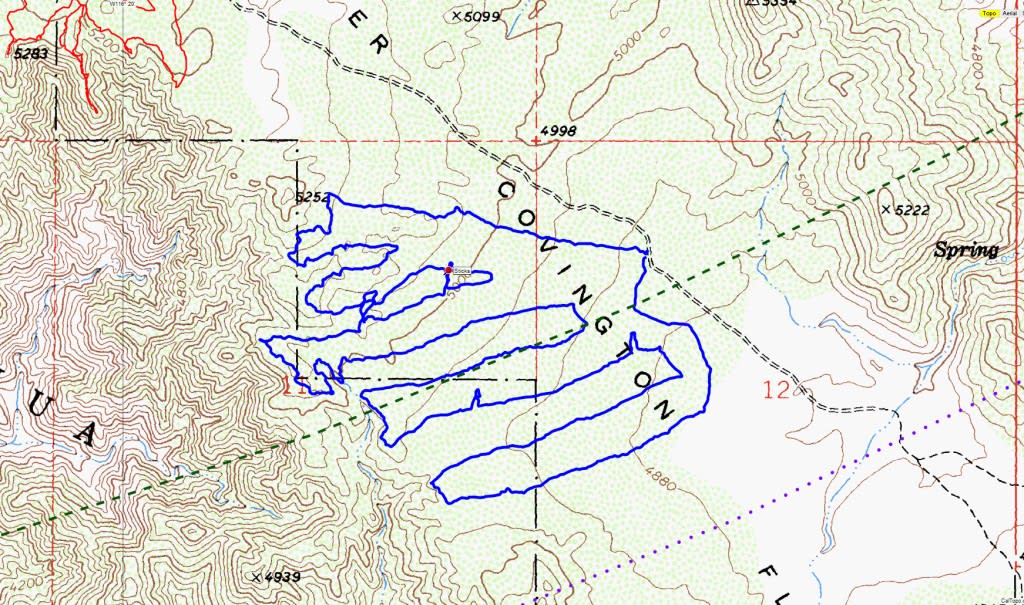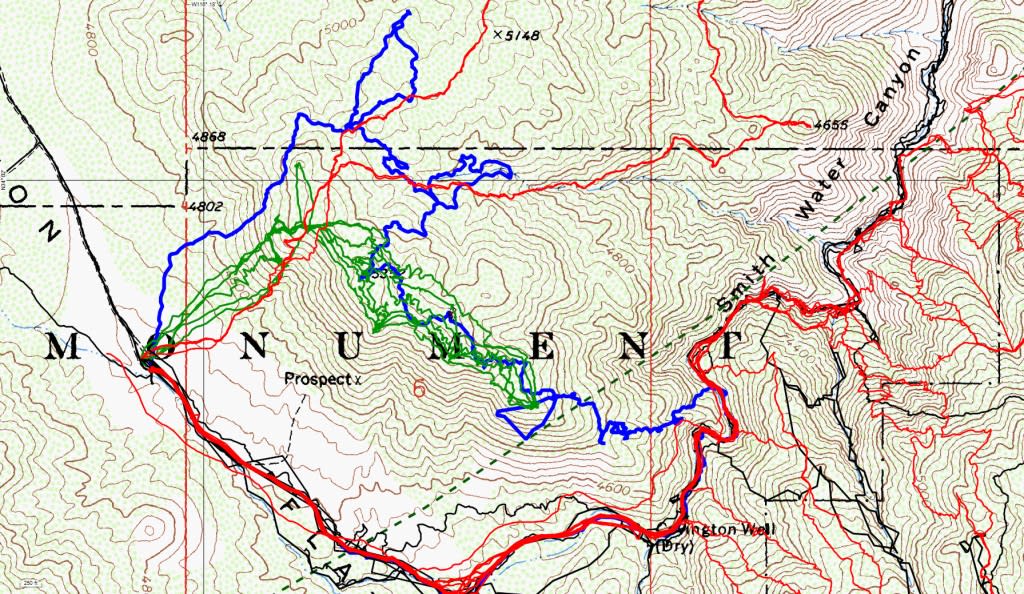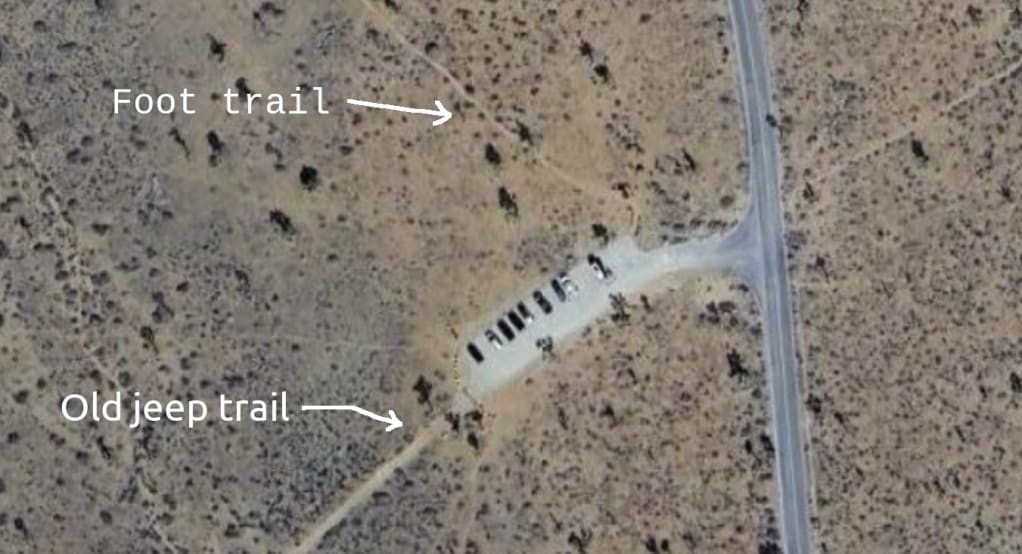Curated. This was a great recommendation and a very readable account of an ultimately failed attempt to find a missing person. I was drawn in by eukaryote's description of the case and, especially, the processes of the searchers. I watched some of the linked videos and sampled some blog posts. (It has also made me feel a little rueful about my time traipsing through washes in the Colorado Desert by moonlight – though in my case it was a bit more populated).
I feel a bit of pressure to precipitate out some kind of neat rationality takeaway from the story of this search. For example, the park management's Simulacrum II decision to distort a shared map maybe lead to tragedy (which I think is pretty plausible to anyone who has tried to use directions that don't indicate the turnings you shouldn't take).
But, I think there's not one neat takeaway. It's a story of trying to carefully build a model of the situation and trying to figure out what hypotheses fit that model, and dealing with the slow drip of inconclusive data. I think it's pretty valuable to read the logs of how people actually tried to reason through the problems they faced, and as eukaryote writes, "Mahood is really good at both being methodical and explaining his reasoning for each expedition he makes, and where he thinks to look".
One moment in Marsland's video really stuck out to me: he is finishing a hike that matched Ewasko's planned routes. The conditions are similar. And as he talks to the camera, he's very visibly slurring and affected by the heat. It's gotta be pretty hard to think under those conditions? I wonder if whatever rationality I have will still work for me when I'm so depleted.
And of course, I am contractually obliged to mention that in 2018, someone applied Bayesian search theory to the case. That is, they started with some simple priors of where he could be and updated against him being on or near the search paths that the searchers took. Here is the posterior superposed on a map of the search area:
And here again is eukaryote's map, the purple dot marks the place that Ewasko's body was eventually found:
It took me a little while scrolling back and forth to mentally map the purple dot onto the first image. In case anyone else has the same issue:
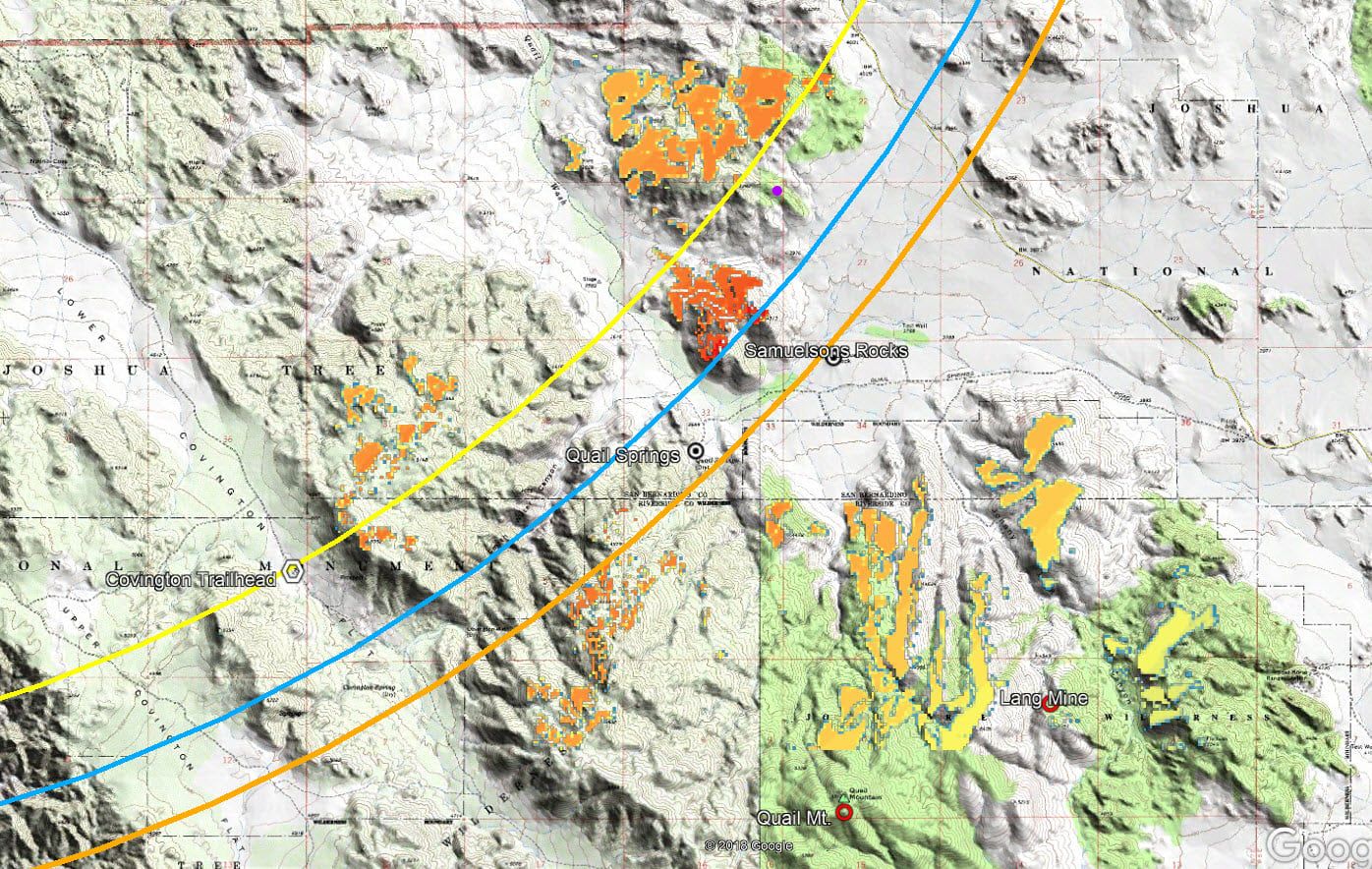
What does it mean, fundamentally, when something is NOT where it is most likely to be (like Ewasko's body here, well outside of the most searched zone)? Or more generally when something - permanently - is NOT the way it is most likely to be? Does it mean our assessment of the likelyhoods was wrong?
Not necessarily; it could mean you're missing relevant data or that your prior is wrong.
EDIT: @the gears to ascension I meant that it's not necessarily the case that our assessment of the likelihoods of the data were wrong despite our posterior being surprised by reality.
Thank you for posting this. I'd been following the Bill Ewasko story and Tom Mahood's blog for years so it's interesting to see it posted here.
I think the "Death Valley Germans" is another very good series of articles from the same blog, with a much more conclusive (but equally sad) ending.
What strikes me is before 2022 there were a lot of people posting theories, and there was one person who posted to /r/unresolvedmysteries that the discrepency between the reports of whether and how Bill's truck was parked could be explained by... someone putting it into a U-Haul, taking it away, and then returning it(!). Source: https://ijustdisappear.com/wp/2018/05/22/unsolved-mysteries/
Yeah, if anyone reading this liked this, I also really recommend Mahood's search for the Death Valley Germans. It's another kind of brilliant investigation.
Thanks for the link, I hadn't read that before! Hah, so that guy, KarmaFrog, is the same guy as Adam who posted the videos I recommended. He makes fun of himself in the video about the U-haul thing, which he has now, er, moved away from as a hypothesis.
Ha, I'll never live the U-Haul down.
To be fair to myself, it was a thought experiment to try to reconcile all the conflicting witness statements and it was the only scenario I could come up with. It was part of a very exhaustive run down of the case that (in another section) also fairly accurately predicted the area Bill might be found and the reasons why he'd be there. To me, you have to go where the evidence takes you and you shouldn't pre-emptively shut down weird explanations that also happen to fit the facts. But...you shouldn't buy into them, either (or put them out in public, as I have learned)!
Really appreciate the shout out on this blog, and the commitment to reason and inquiry underlying it.
For the record I'm the same person who brought it up in 2022 on reddit when he was found and objected to it when you posted the original blog to unresolvedmysteries in 2018, so I think this is a case of one particularly annoying person who follows you around chanting "U-Haul! U-Haul!" :)
Thank you for all your hard work on the case, I actually had no idea you were the same Adam on the search and the blog.
I think the U-Haul theory was still a valuable contribution, even though it was debunked thoroughly. It honestly tried to make sense of the facts known at the time. Adam's contributions to the case were considerable, even though he always insisted on Tom's contributions being more important.
It's a real horses / zebra kind of thing, though.
The situation: a hiker goes missing in an area where hikers are known to go missing (and, sadly, die).
The problem: eyewitnesses report the hiker's truck being in one direction, then not present at all, then in another direction.
Solution 1: eyewitnesses were mistaken about whether they saw the car / what direction it was facing
Solution 2: someone stole the car, took it away for a bit, and then returned it to the trailhead
Occam's razor requires only one additional assumption for solution 1 (eyewitnesses sometimes/often make mistakes, which is well-known, especially about something as banal about an ordinary car), whereas solution 2 requires us to postulate an entire person (or persons?) who had a motivation to take and then return the car (what? any motivation - e.g. maybe Bill was involved in the drug trade - adds more assumptions).
Let me posit Solution 3: the ranger deliberately recorded his information wrong because he didn't want to be in trouble for not sounding the alarm about a missing hiker.
or Solution 4: the park management/police colluded together to falsify the witness reports to provide doubt to Bill dying hiking to try and reduce the number of deaths attributable to JTNP
Both Solution 3 and Solution 4 seem far less fanciful than Solution 2. Sure, Solution 5 ("Aliens!") would be more fantastical than the u-haul one, but just because the Solution 2 doesn't rely on us changing our understanding of our place in the world doesn't mean it's valuable to think about.
If Bill's body had been discovered buried in the back yard of some drug lord, then sure, Solution 2 all of a sudden looks good. But the situation presented (missing hiker in a place where hikers have been known to get lost and die) does not require that level of attention.
I don't deny Adam contributed more to the case than almost anyone out there, but the u-haul theory doesn't become valuable just because it was he who postulated it.
OK, I was gonna stay out of this, but I have to call b.s. (respectfully) on your take.
Solution 1 was indeed always the most likely but I have just as much an issue with the bias towards the unexpected solution as the bias towards the mundane one when the latter does not fit the facts as known.
Your comment is a perfect example of this. Your Solution 3 sounds comfortably mundane except that it's impossible. The ranger reported his information in real time, not after the fact. Solution 4 is likewise virtually impossible because of the timeline and the number of different agencies involved. So while they sound more plausible on the surface, they have no validity. They just sound less kooky. It contributes even less to understanding the case than the U-Haul. It's noise.
This is the problem with arranging our thinking solely on the basis of favoring a conventional answer.
At that time we had a situation where Ewasko had not been found anywhere he'd be expected to be found, we had a ping that geographically made no sense (and that was timed suspiciously, though it turned out to be complete coincidence), and we had eyewitnesses (park employees, one of whom was tasked to find the car) who missed his car three times, and the one who said his car was turned around was absolutely adamant on this point. There was also a lot of ancillary evidence for a self-disappearance that again later turned out to be coincidental. But it was there. It wasn't aliens, and it wasn't really that much of an evidential reach if you knew as much about the case as I did.
So everyone else, like you, had just handwaved this all away. I had, and still have, a problem with that. So I made the honest attempt to reconcile the eyewitness fact set and put it out there - knowing full well I was going to look like an ass in so doing, even though I said right up front that this was a far-fetched idea, and it comprised about 2% of an exhaustive blog on the case which, may I add, correctly stated in another section where he was most likely to be found.
And yes, it did contribute to the case because it forced people to think of a better scenario which no one had yet done. And someone did - they posited that because of the layout of the parking area, Mimi Gorman had indeed seen (or thought she had seen) the car parked in reverse because of the angle she was viewing it coming back from Keys' View. Better explanation that didn't dodge the problem, which I immediately accepted. It would not have happened but for the U-Haul.
I get my back up about this a little because there's an understandable - but in my opinion intellectually lazy - bias against a non-mundane solution because of the amount of conspiracy theory b.s. on the internet. Look, I get it. Extraordinary claims required extraordinary proof. But this was not a claim. It was simply an idea for discussion and through it, a better idea came out of it which by the way I immediately accepted as more plausible.
Now I could have said "I don't want to look like a dummy because internet critics will jump all over it despite the years I've put into this case seize on this one little thing because it's an easy smackdown" which was indeed a predictable outcome. And in retrospect I wish I had not put it out there. But at the time, not doing so felt like an act of cowardice. So I put it in the blog, heavily codiciled, and the internet did what it did. I also by the way allowed myself to look like an idiot by pretending I thought foul play was plausible - which I never did - because it's what the family thought and I didn't want to add to their pain suggesting Ewasko took off in case I was wrong. And of course, I was.
I think I've atoned for my past sins with the videos I've put up, which admit to my theoretical mistakes, but as it said, those mistakes built to a full understanding of the case. That's how scientific inquiry works, and science is full of far-fetched ideas that were ridiculed but later turned out to be right. This was not, of course, one of them. But if they fit the facts I don't think we should mock those ideas out of existence.
Thank you for your time.
One aspect of this I find anthropologically interesting is the motivations of Adams and Lahood. Spending years searching for a total stranger's dead body. Why? Why do we want to "know what happened" so badly? What is at stakes here? There is a movie like that - it's called The Vanishing. It's quite good.
It was an interesting puzzle, I like desert hiking, and it was a challenge I needed in my life at that time.
I talk about it a little here (time stamped to the correct location):
If you go out into the wilderness, bring plenty of water. Maybe bring a friend. Carry a GPS unit or even a PLB if you might go into risky territory. Carry the 10 essentials.
Most people who die in the wilderness have done something stupid to wind up there. Fewer people die who have NOT done anything glaringly stupid, but it still happens, the same way. Ewasko’s case appears to have been one of these.
Hmm, so is there evidence that he did in fact follow those common-sense guidelines and died in spite of that? Google doesn't tell me what was found alongside his remains besides a wallet.
I wouldn't call them "common-sense". When a modern-day tragedy (death of a child) is required before "hug a tree and survive" becomes a slogan, it seems safe to say that they are counter-intuitive.
If humans did the right thing by default (e.g. "If you are lost, 'Hug-A-Tree' and stay put."), there would be fewer sad stories.
Check out Marsland's post-coroner's-report video for all the details, but tentatively it looks like Ewasko:
- Hiked alone
- Didn't tell someone the exact trailhead/route he'd be hiking (later costing time, while he was still alive, while rescuers searched other parts of the park)
- Didn't have a GPS unit / PLB, just a regular (non-smart) cellphone (I don't actually know to what degree a regular smartphone works as a dedicated GPS unit - like, when you're at the edges of regular coverage, is it doing location stuff from phone + data coverage, or does it have a GPS chip? - but either way, he didn't have a smartphone)
- Had an unclear number of the ten essentials - it seems like a fair number? But (as someone in the youtube comments pointed out) if he had lit a fire, rescuers could have found him from the smoke, so either he didn't think of that or he just didn't have a firestarter.
Though I want to point out that doing all of these things - well, it's not an insane amount of preparation, but it's above bare minimum common sense / "anyone going out into the woods who thinks at all about safety is already doing this." I've had training in wilderness/outdoor safety type stuff and I've definitely done day hikes while less prepared than Ewasko was.
Well, the thing I'm most interested in is the basic compass. From what I can see on the maps, he was going in the opposite direction from the main road for a long time after it should have become obvious that he had been lost. This is a truly essential thing that I've never gone into unfamiliar wilderness without.
Ah! I forget about a compass, honestly. He definitely came in with maps (and once he was out there for, like, over eight hours, he would have had cues from the sun.) A lot of the mystery / thing to explain is indeed "why despite being a reasonably competent hiker and map user, Ewasko would have traveled so far in the opposite direction from his car"; defs recommend Adam's videos because he lays out what seems like a very plausible story there.
(EDIT: was rewatching Adam's video, yes Bill absolutely had a compass and had probably used it not long before passing, they found one with his backpack near the top. Forgot that.)
Yes, I buy the general theory that he was bamboozled by misleading maps. My claim is that it's precisely the situation where a compass should've been enough to point out that something had gone wrong early enough for the situation to have been salvageable, in a way that sun clues plausibly wouldn't have.
I think confirmation bias plays a role here. At the point where I think Bill probably went wrong (of course we will never know for sure), there's a junction of two basically identical jeep trails, neither of which are marked on the park map or most of the then-current trail maps (they are on the topo map). There's 3 or 4 different ways he might have gone down the wrong road - others have mentioned the two I put out there, there's a couple of other ways that are possible but less plausible so I didn't bother with them - but he should have noticed he was going south and not east, by the setting sun. However, because of the angle of the road and the mountain cover, plus having an obvious road to follow, I can see why he wouldn't have. The sun would still more or less be setting behind him, and to his right, on either route. If he was focused on making time, it's unlikely he'd note the exact angle of the sun.
My feeling is that because Bill was in a hurry, he did not get out things like a compass or (maybe, depending on how he got lost) more detailed maps until he knew he was lost and by that time he was screwed by the darkness and the topography of the area which wouldn't allow him to dead reckon back unless he could find the trail again, and at that point it was a wash, of which there are a half dozen in the area. I basically cover this in the video, there's a lot of information there so it can be hard to follow, but there are reasons why the compass didn't get him out of the situation.
Thank you for the post, I'll be watching the video later. The first thought that comes to my mind is why wasn't there a helicopter search in the area? The paucity of trees on the terrain seems to be perfect for helicopter reconnaissance but I see no mention of that in this post.
Helicopters were used as part of the initial S&R efforts! Also tracking dogs. They just also didn't find him. There's a little about it in Tom's stuff. I don't know if Tom got the flight path / was able to map where it searched, I think there's some more info buried in this FOIA'd doc about the initial search that Tom Mahood got ahold of.
(One thing I saw - can't remember who mentioned this, if it was Mahood or Adam Marsland - is that the FOIA'D doc mentions S&R requesting a helicopter with thermal imaging equipment to come search too, but that doesn't seem to have actually ever happened. Which is a shame, because at that point Ewasko was alive and presumably closer to/within the main search areas, so that could have actually found him.)
With modern drones, searching in places with as few trees as Joshua tree could be done far more effectively. I don't know if any parks have trained teams with ~$50k with of drones ready but if they did they could have found him quickly
The LessWrong Review runs every year to select the posts that have most stood the test of time. This post is not yet eligible for review, but will be at the end of 2025. The top fifty or so posts are featured prominently on the site throughout the year.
Hopefully, the review is better than karma at judging enduring value. If we have accurate prediction markets on the review results, maybe we can have better incentives on LessWrong today. Will this post make the top fifty?
